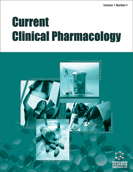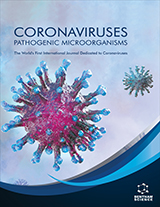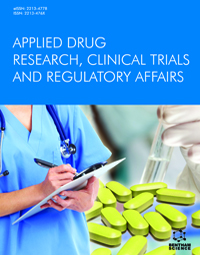Preface
Page: i-ii (2)
Author: Prerna Sharma, Peeyush Kaushik, Sumeet Gupta, Hitesh Malhotra and Pharkphoom Panichayupakaranant
DOI: 10.2174/9789815223880124010001
PDF Price: $15
Nutraceutical – An Alternative Pathway in Therapeutics
Page: 1-15 (15)
Author: Rishabh Chalotra, Kakul Chaudhary, Sanchit Dhankhar, Samrat Chauhan, Meenakshi Dhanawat and Sumeet Gupta*
DOI: 10.2174/9789815223880124010003
PDF Price: $15
Abstract
Nutritional supplements, herbal items, and processed foods, including cereals, soups, and beverages, are all sources of nutraceuticals that have medicinal or health benefits for the prevention and treatment of diseases. Nature has provided us with immeasurable, wonderful gifts, including natural products, herbal medicines, etc. All the civilizations, societies, cultures, and ethnic groups from pre-historic times till the present use plants, animals, and minerals to cure diseases. Numerous cultures have a long history of using plants to cure a variety of disorders, which has led to the formation of well-defined medical systems like Ayurveda, traditional African remedies, Chinese herbal medicines, Kampo in Japan, etc. Many medicinal plants' healing qualities have been acknowledged on a global scale. Various scientific studies, preclinical studies, clinical studies, etc., are going on to collect scientific evidence to prove their activity. There are safety problems associated with allopathic medicines. Nutraceuticals are foods high in nutrients that are consumed for reasons other than mere nutrition. These medications have shown promising outcomes in recent studies in the treatment of various pathological illnesses, including cancer, diabetes, cardiovascular disease, and neurological problems, with nutritional benefits. The most common nutraceuticals are curcumin from turmeric, glucosamine from ginseng, omega-3 fatty acid from linseed, β-Lactoglobulin from bovine milk, etc. This chapter describes the role of nutraceuticals in health and how they are different from foods and medicines.
Novel Drug Delivery System for Nutraceuticals
Page: 16-33 (18)
Author: Anjali Sharma*, Devkant Sharma, Himani Bajaj, Mayank Yadav and Prerna Sharma
DOI: 10.2174/9789815223880124010004
PDF Price: $15
Abstract
Nutraceuticals have gotten a lot of attention in recent years because of the health-promoting and disease-prevention properties along with their nutritional value. The increasing quantity of widely viable nutraceuticals and their wide range of uses indicate the domination of these products around the world. Nutraceuticals contain a variety of health advantages and functions; however, most nutraceuticals degrade quickly in the gastrointestinal tract and have low bioavailability. Different innovative drug delivery-containing carrier technologies are continually being researched in order to improve the efficacy and bioavailability of herbal medications. To overcome hurdles and enable efficient application, a unique carrier system is becoming increasingly important. This chapter provides an insight into nanoencapsulated nutraceuticals' physical and gastrointestinal stability, as well as their bioavailability, which are all taken into account. The existing limitations, synthesis, and applications of different lipid-based nanocarriers (including niosomes and liposomes) and lipid nanoparticles (SLNs and NLCs) are examined critically. This study also attempts to document the most recent advancements and problems in the field of nanonutraceuticals, a cuttingedge subject that uses nanotechnology to encapsulate bioactive substances in order to enhance their medicinal effectiveness and release profile.
Phytoconstituents as Nutraceuticals
Page: 34-47 (14)
Author: Geeta Deswal*, Bhawna Chopra, Madhukar Garg, Lavish Vaid, Arhat Jain, Ashwani K. Dhingra, Ajmer Singh Grewal and Priyanka Kriplani
DOI: 10.2174/9789815223880124010005
PDF Price: $15
Abstract
Nutraceuticals are nutritional supplements exploited for upgrading wellbeing, delayingaging, averting ailments, and supporting the appropriate working of the human body. At present, nutraceuticals are gaining significant attention owing to their nourishment as well as therapeutic potential. On the basis of sources, they are classified into nutritional supplements and biologically active plant-derived molecules. These nutraceuticals support fighting some of the foremost well-being complications of the era, including obesity, cardiac ailments, malignancy, osteoporosis, arthritis, diabetes, etc. Nutraceuticals have benefits over medication since these are devoid of side effects and are composed of nature-based nutritional supplements. This chapter gives an overview of various bioactive components obtained from secondary metabolites of plants with a diverse era of chemical classes that might act as nutraceuticals (i.e., anthraquinones, alkaloids, saponins, tannins, essential oils, carotenoids, flavonoids, bitters, carbohydrates, protein, and vitamins).
Anthocyanins as Nutraceuticals
Page: 48-67 (20)
Author: Rohit Dutt, Pooja Mathur*, Sweta Kamboj, Rohit Kamboj, Kumar Guarve, Shikha Kamboj, Rudrakash, Tanu Devi and Prerna Sharma
DOI: 10.2174/9789815223880124010006
PDF Price: $15
Abstract
Anthocyanins are a group of colored, water-soluble flavonoid chemicals that
are widely distributed in fruits, leaves, roots, and other portions of plants. They belong
to a large group of flavonoids known as glycosides of anthocyanidins. Anthocyanins
are often found in foods including cherries, plums, strawberries, raspberries,
blackberries, grapes, redcurrants, blackcurrants, vegetable roots, legumes, and grains as
colored compounds. Natural foods are known to contain more than 600 anthocyanins.
Anthocyanin, which is consumed by humans, is one of the greatest flavonoids. Dietary
anthocyanins are not very harmful. They are also helpful for polygenic diseases and
managing weight. These actions, which include anti-inflammatory, liver-protective,
analgesic, and anti-cancer properties, have given anthocyanins tremendous economic
potential and driven researchers to concentrate on studying their chemistry, biological
activity, isolation, and quality. Dietary therapies using anthocyanins are being
thoroughly researched for the prevention of numerous chronic diseases, including GI
cancer.
Anthocyanins have been used in clinical investigations that have demonstrated a
substantial reduction in oxidative stress and inflammatory indicators, as well as a
positive impact on vascular function and hyperlipidemia by boosting high-density
lipoprotein and lowering low-density lipoprotein levels. Additionally, they may have
an impact on cognitive decline and glucose homeostasis. The most recent research on
anthocyanins as food supplements and nutraceuticals is summarized in this publication.
The general structure of anthocyanins is shown in Fig. (1).
Targeting Inflammatory Biomarkers and Free Radicals by Anthocyanins
Page: 68-83 (16)
Author: Hitesh Malhotra*, Rudrakash and Tanu Devi
DOI: 10.2174/9789815223880124010007
PDF Price: $15
Abstract
Inflammation and oxidative stress are synergistic partners in the etiopathogenesis of diverse diseases. Polyphenols, such as anthocyanins, are responsible for the regulation of the inflammatory process and activation of the endogenous antioxidant defense system. Anthocyanins modulate the level of inflammatory markers and exert an anti-inflammatory effect. Consequently, translating the research outcomes into clinical practice significantly contributes to the prevention and management of chronic diseases. The chapter summarizes the role of anthocyanins as anti-inflammatory and anti-oxidative molecules in both health and diseases. Anthocyanins downregulate pro-inflammatory markers in chronic disease and thus suppress inflammation as well as oxidative stress in inflammatory disorders. The chapter can help researchers and other healthcare professionals to understand the importance of anthocyanin use in chronic diseases.
Role of Anthocyanins in Cancer
Page: 84-92 (9)
Author: Sugumari Vallinayagam, Vajiha Aafrin Basheer, Sai Nandhini Ravi, Shantanu Bhar, Yannam Jai Sai Pranav, Jeyanthi Planivelu and Azhagu Saravana Babu Packirisamy*
DOI: 10.2174/9789815223880124010008
PDF Price: $15
Abstract
Anthocyanins, natural pigments abundantly present in fruits
and vegetables, have demonstrated diverse bioactive properties, including antioxidant
and anti-inflammatory effects. There is growing interest in exploring their potential
role in cancer prevention and treatment due to these properties.
Objective:This study aimed to comprehensively investigate the impact of anthocyanins
on cancer, elucidating the underlying mechanisms through In vitro and In vivo
experiments.
Method:The study was conducted to identify studies investigating the effects of
anthocyanins on cancer cells. The selected studies encompassed In vitro experiments
utilizing cell cultures and In vivo investigations employing animal models to assess the
potential inhibitory effects of anthocyanins on tumor growth. The review focused on
molecular and cellular assays from these studies, specifically exploring the modulation
of oxidative stress, inflammation, apoptosis, angiogenesis, and cell cycle regulation by
anthocyanins. The methodological approaches and key findings from these studies
were critically analyzed to provide a comprehensive overview of the current state of
knowledge regarding the role of anthocyanins in cancer.
Result: The findings revealed that anthocyanins exerted potent antioxidant effects,
mitigating oxidative stress and DNA damage in cancer cells. Anti-inflammatory
properties were demonstrated by the suppression of key inflammatory pathways.
Anthocyanins induced apoptosis in cancer cells, leading to programmed cell death
while sparing normal cells. Furthermore, they exhibited antiangiogenic effects by
disrupting the formation of blood vessels essential for tumor growth. The modulation
of cell cycle progression was also observed, suggesting a role in preventing
uncontrolled cell proliferation.
Anthocyanins: Pharmacology and Nutraceutical Importance
Page: 93-116 (24)
Author: Md Shamshir Alam*, Manish Kumar Maity, Abdul Salam Nazmi and Md Ali
DOI: 10.2174/9789815223880124010009
PDF Price: $15
Abstract
Anthocyanins are natural, colored, water-soluble plant pigments that belong to the flavonoid, a subclass of the family polyphenol. Common dietary sources of anthocyanins include red and purple berries, grapes, apples, plums, cabbage, and other foods strong in natural colorants. Cyanidin, delphinidin, malvidin, peonidin, petunidin, and pelargonidin are among the six most prevalent anthocyanidins in nature. Cyanidin3-glucoside, one of the anthocyanin pigments, is the main anthocyanin present in most of the plants. Following ingestion, anthocyanins are absorbed in the digestive system, with the distal lower colon meant for the major absorption and metabolism. Anthocyanins are extensively broken down by microbes in the colon before being absorbed and used by humans in phase II metabolism. As a result, hybrid microbialhuman metabolites are created, which are then ingested and boost the anthocyanins' bioavailability. Colored anthocyanin pigments are traditionally used as natural food colorants. In addition to their usage as natural colors, anthocyanidins and anthocyanins are potential medicinal components that have a variety of positive health effects. Anthocyanins provide several health advantages, particularly in the prevention of oxidative stress-related illnesses, including cardiovascular, metabolic, and neurological disorders. According to new data, the regulation of gut microbiota may also be linked to the health-promoting benefits attributed to anthocyanins. Despite the potentially widespread biological activity of anthocyanins, safety and toxicological concerns are relatively minor. The advantages of anthocyanins for health have been the focus of extensive study over the last two decades. This book chapter focuses on a thorough overview of the most recent research on anthocyanins, their pharmacological properties and nutraceutical values in human health.
Therapeutic Efficacy of Anthocyanins in Metabolic Disorders
Page: 117-136 (20)
Author: Sanchit Dhankhar, Kakul Chaudhary, Rishabh Chalotra, Monika Saini, Sumeet Gupta and Samrat Chauhan*
DOI: 10.2174/9789815223880124010010
PDF Price: $15
Abstract
Metabolic syndrome (MetS) is a chronic disorder developed with cumulative symptoms of diabetes mellitus, hypertension and dyslipidemia. The etiologic causes of metabolic syndrome are a sedentary lifestyle, poor dietary choices, and hereditary factors, which have a negative impact on the health of people by increasing the risk of cardiovascular problems, organ damage, and additional pathology related to MetS. Anthocyanins (ANTs) are plant-based biomolecules that promote health and belong to a polyphenols subclass of flavonoids. Concurrent research reports have found that plants rich in ANTs may have therapeutic advantages for diabetes, obesity and MetS by decreasing insulin resistance, poor glucose resistance, dyslipidemia, high cholesterol levels in serum, hypertension, and inhibiting free radical formation. This chapter reviews the therapeutic advantage of ANTs in the management of MetS, along with their pharmacological mechanisms and biopharmaceutical functions. Similarly, the use of ANT-rich supplements is discussed for their potential in the control of MetS.
Anthocyanins as Nutraceutical for Gastric Disorders
Page: 137-158 (22)
Author: Sangeeta Narwal, Beena Kumari, Sunil Kumar and Manish Kumar*
DOI: 10.2174/9789815223880124010011
PDF Price: $15
Abstract
Vegetables are a crucial part of the human diet and a significant source of
physiologically active nutraceuticals. Due to their safety, effectiveness, possible
nutritional value, and therapeutic effects, they have attracted a lot of attention in the
diet world. Customers are expressing a desire for wholesome food items made with
natural, health-improving components, which is primarily fostering the expansion of
companies involved in the anthocyanin market. Anthocyanin helps to prevent skin
damage and aging, creating potential for suppliers in the nutraceutical and cosmetics
industries. Common phytonutrients include lycopene from tomatoes and carotenoids
from carrots, among others. There are numerous metabolic and degenerative diseases,
most of which are caused by nutritional deficiencies, now increasingly affecting the
population. Nutraceuticals are any ingredient used as food or as a component of food
that has normal nutritional value and offers health advantages, such as illness
prevention or health promotion.
The practice of relieving gastric discomfort with particular foods has long recognized
the impact of nutrition on gut health, and more recently, a link between certain diets
and decreased incidences of a number of gastrointestinal disorders has been
established.
For the purpose of human disease prevention, the focus of this analysis is on grape seed
nutraceuticals' most recent developments and prospective applications in the future.
Anthocyanins as Nutraceutical for Infertility and Impotency
Page: 159-172 (14)
Author: Vikas Sharma*, Benu Chaudhary, Preeti Arya, Deepak Singla and Nidhi Rani
DOI: 10.2174/9789815223880124010012
PDF Price: $15
Abstract
Anthocyanins comprise polyphenols having recognized antioxidant capacity, whichare involved in several biological processes such as the protection or reduction of heart disease, arthritis, diabetes, and cancer and also play an important role in infertility as well as impotency. Such qualities, including stability and bioavailability, are determined by their chemical composition. The current study provides a brief overview of anthocyanin's chemical components, bioavailability, as well as anti-inflammatory properties. If a couple has already been attempting to conceive for more than a year without success, then they may be regarded ashaving fertility problems. Worldwide, 20% of all couples are unable to have offspring. Subfertility canaffect either female, male, or even both partners. Nevertheless, for some couples, the source of infertility cannot be determined, which is known as unexplained infertility. Antioxidants are expected to reduce the harm resulting from oxidative stress, which is known to be implicated in the pathogenesis of infertility. Antioxidants are commonly available and reasonably priced. However, there is currently insufficient high-quality research to establish whether consuming antioxidants would benefit or damage infertile women.
Role of Anthocyanins in Neurological Disorders
Page: 173-196 (24)
Author: Vajiha Aafrin Basheer, Phalguni Maity, Prejesh Samuel Sofalas, Sugumari Vallinayagam, Sai Nandhini Ravi and Azhagu Saravana Babu Packirisamy*
DOI: 10.2174/9789815223880124010013
PDF Price: $15
Abstract
Anthocyanins, natural pigments abundantly found in various fruits and vegetables, have attracted increasing attention for their potential role in mitigating neurological disorders. This review explores the multifaceted neuroprotective effects of anthocyanins, focusing on their ability to counteract oxidative stress, modulate neuroinflammatory responses, and influence cognitive function. Drawing on a diverse range of studies, both In vitro and in vivo, we examine the impact of anthocyanins on neuronal health and their potential therapeutic applications in neurodegenerative diseases. The antioxidant properties of anthocyanins play a crucial role in reducing oxidative damage, while their anti-inflammatory effects contribute to the attenuation of neuroinflammation, a common feature in neurological disorders. Furthermore, anthocyanins exhibit promising potential in preserving cognitive function and preventing neurodegenerative conditions. This comprehensive analysis highlights the emerging significance of anthocyanins as potential neuroprotective agents and emphasizes the need for further research to unlock their full therapeutic potential in the context of neurological disorders.
Current Global Scenario for Anthocyanin-Based Nutraceuticals
Page: 197-218 (22)
Author: Suchitra Nishal, Ashwani Arya, Renu Kadian and Manish Dhall*
DOI: 10.2174/9789815223880124010014
PDF Price: $15
Abstract
In recent years, the world population has been very conscious about having a healthy lifestyle. Anthocyanin is nowadays popular as a nutraceutical and hasalready been part of traditional medicines. It is not only employed as a colored pigment but also as a potent ingredient in pharmaceutical preparations in several food industries. Various In vitro (scavenging assays) and In vivo (animal and human cell line studies, various animal models, and clinical trials) evaluations have revealed that anthocyanins are rich in dietary supplements when consumed either through food or beverages and have always been beneficial for humans. According to several studies, it is reported that these anthocyanins possess various activities such as antioxidant, anti-aging, antiinflammatory, anti-diabetic, and antiviral and also manage illnesses related to neuroprotection and neurodegeneration. The size of the worldwide nutraceuticals market, estimated at USD 454.55 billion in 2021, is anticipated to rise at a 9 percent compound annual growth rate between 2021 and 2030. Over the course of the forecast period, the market is anticipated to be driven primarily by the rising demand for functional foods and dietary supplements. A positive view of medical nutrition in light of its growing use to treat cardiovascular disease and malnutrition is predicted to stimulate the market for dietary supplements. The significant characteristics of anthocyanin-based nutraceuticals are efficiency in cost, a wide safety view for both animals and humans, acceptability and easy availability. Regardless of a wide safety view, some of the nutraceuticals-based products are considered to be negotiated owing to adulteration with poisonous pesticides, abusive drug molecules, heavy metals, harmful plants, mycotoxins and lethal fertilizers. Thus, future broad research from both the pharmaceutical area and academia is required to ensure their effectiveness and safety concerns.
Subject Index
Page: 219-224 (6)
Author: Prerna Sharma, Peeyush Kaushik, Sumeet Gupta, Hitesh Malhotra and Pharkphoom Panichayupakaranant
DOI: 10.2174/9789815223880124010015
PDF Price: $15
Introduction
Anthocyanins are a diverse group of phytochemicals used for the treatment and management of acute and chronic ailments. This book is a comprehensive guide to anthocyanins and their importance as pharmaceutical and nutraceutical agents. The book provides detailed information about anthocyanin sources and their application in the treatment of diseases including cancer, gastric disorders, infertility, metabolic diseases, and neurological disorders. Key features · Explains the importance of phytochemicals and nutraceuticals · Provides details of anthocyanin sources and mechanisms of action · Includes chapters dedicated to the use of anthocyanins to treat specific diseases · Provides a summary of the market for anthocyanins as a pharmaceutical and nutraceutical product · Includes scientific references






















